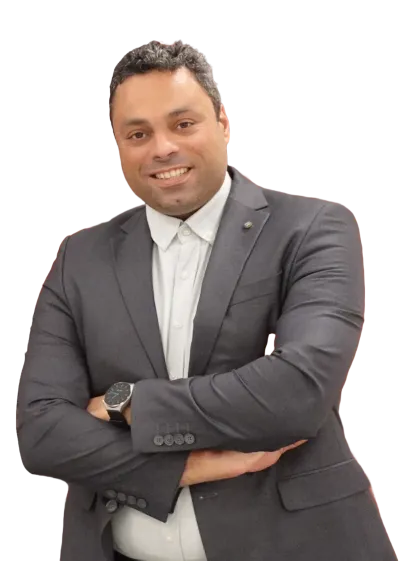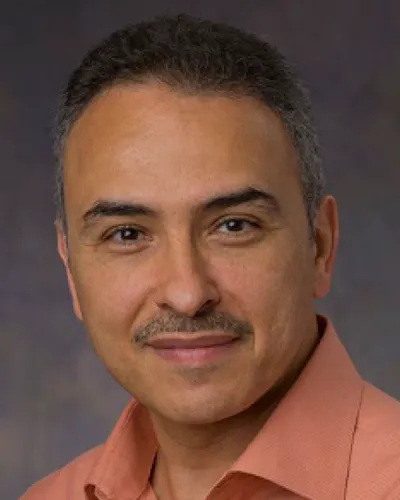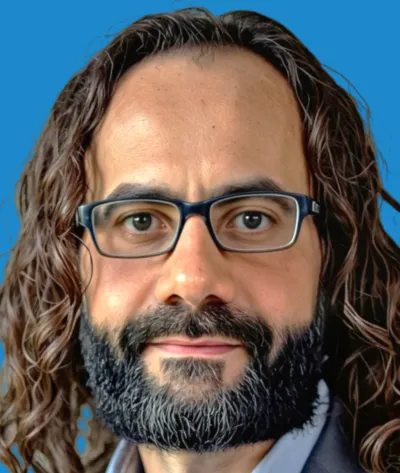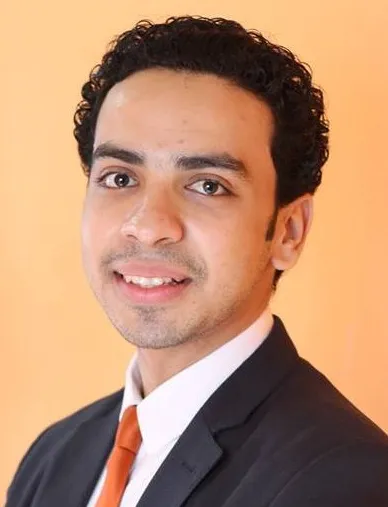-
Prof. Mohammed El Massie
-

Optical Wireless Communication: From Fundamentals to Future Directions
Optical Wireless Communication (OWC) is a fast-growing field that uses light to provide high-speed, secure communication. This tutorial covers both fundamental concepts and advanced developments in OWC. It introduces key optical concepts, including optics, photonics, and quantum optics, and explains Lightwave signal modeling. Attendees will explore ray and wave optics principles such as reflection, refraction, and optical components like prisms, lenses, and fiber optics. Photon optics, including photon flux and arrival rate, will also be discussed, comparing ray, wave, and photon behaviors.
The second part focuses on OWC system design, covering light-emitting diodes (LEDs), laser diodes (LDs), and modulation techniques (direct and external). Optical receivers and detection methods, such as photodetectors and coherent detection, will be explained. Channel modeling will be discussed, considering key challenges like atmospheric attenuation (due to rain, fog, and snow), Geometric losses (Plane waves, Gaussian beam, …), turbulence (beam wander, beam jitter, scintillation, and spectrum model), and diffraction. Strategies to mitigate these effects and optimize system performance will be discussed. Emerging topics like quantum communication, Quantum Key Distribution (QKD), and their applications in Free-Space Optical (FSO) and Visible Light Communication (VLC) systems will also be presented.
The tutorial will also cover applications of OWC in non-terrestrial networks (NTNs), including High Altitude Platform Stations (HAPS), Unmanned Aerial Vehicles (UAVs), and satellites. Practical applications, such as FSO for smart cities and VLC for the Internet of Things (IoT) and vehicular networks, will be explored alongside challenges in implementing these technologies.
-
Dr. Ahmad Nagib, Dr. Hatem Abou-Zeid and Prof. Hossam Hassanein
-
A Roadmap to Trustworthy Reinforcement Learning in Next-Generation Wireless Networks
Artificial intelligence capabilities are envisioned to transform the design and operation of 6G networks. Reinforcement learning (RL), in particular, has emerged as a fundamental approach toward this goal with strong support from industry and the open radio access network (O-RAN) alliance to enable RL deployment in networks. While research efforts have demonstrated the potential of RL, the lack of trustworthiness of RL algorithms remains a challenge toward practical adoption in real-world networks. In this tutorial, we will present the foundations of trustworthy RL algorithms, discussing a suite of methods to achieve generalizability, safety, explainability, and robustness. Concrete examples of the adoption of trustworthy RL from emerging literature in wireless networks will then be introduced. This will be followed by a practical case study on O-RAN slicing that incorporates several components of trustworthy RL. A hands-on interactive session where the audience is guided to implement and test their own trustworthy RL codes will then be presented. Finally, we will conclude the tutorial by discussing open research challenges and future directions at the intersection of trustworthy RL and wireless networks.
 Prof. Hossam Hassanein
Prof. Hossam HassaneinProf. Hossam Hassanein [S’86, M’90, SM’05, F’17] is a leading researcher in the areas of broadband, wireless and mobile networks architecture, protocols, control and performance evaluation. His record spans more than 600 publications in journals, conferences and book chapters, in addition to numerous keynotes and Tutorials in flagship venues. Dr. Hassanein has received several recognition and best paper awards at top international conferences. He is the founder and director of the Telecommunications Research Lab (TRL) at Queen's University School of Computing, with extensive international academic and industrial collaborations. He is the recipient of the 2016 IEEE Communications Society Communications Software Technical Achievement Award for outstanding contributions to routing and deployment planning algorithms in wireless sensor networks, and the 2020 IEEE IoT, Ad Hoc and Sensor Networks Technical Achievement and Recognition Award for significant contributions to technological advancement of the Internet of Things, ad hoc networks and sensing systems. Dr. Hassanein is a fellow of the IEEE, and is a former chair of the IEEE Communication Society Technical Committee on Ad hoc and Sensor Networks (TC AHSN). He is an IEEE Communications Society Distinguished Speaker (Distinguished Lecturer 2008-2010).

Dr. Hatem Abou-Zeid [S’04–M’14] is a Schulich Industry Chair for AI in 6G and an Associate Professor with the University of Calgary where he directs the WAVES Research Group. Prior to that, he was at Ericsson leading 5G research for intelligent radio access networks and low-latency communications. Several wireless access and traffic engineering techniques that he co-invented and co-developed are deployed in 5G mobile networks worldwide. Dr. Abou-Zeid expertise is in foundation models and trustworthy AI for wireless networks, extended reality networking, and resource management. His work resulted in 20 patent filings and over 90 journal and conference publications in several IEEE flagship venues on these topics. He is an avid supporter of industry-university partnerships, and he served on the Ericsson Government Industry Relations and Talent Development Committees, where he directed numerous academic research partnerships valued at over $3.5 million. He served as the Co-Chair for the IEEE ICC Workshop on Wireless Network Innovations for Mobile Edge Learning and the Corporate Co-Chair for the IEEE LCN Conference 2022. He has delivered numerous invited talks on foundation models and trustworthy AI for future communication networks and received several accolades for his academic contributions, including a Best Paper Award at IEEE ICC 2022, the Research Excellence Awards at the University of Calgary (2023, 2024), AI/ML ASTech Award Finalist, Outstanding Academic Achievement Award and the Software Engineering Professor of the Year Award at the University of Calgary (2023).

Dr. Ahmad Nagib [S’11–M’25] received his Ph.D. from the School of Computing at Queen's University in 2024. He also holds B.Sc. and M.Sc. degrees from the Faculty of Computers and Artificial Intelligence at Cairo University. Currently, he is a Postdoctoral Fellow at the Queen's Telecommunications Research Lab (TRL), where he leads research efforts on AI for Next-Generation Wireless Networks (NGWNs). Ahmad is a pioneering contributor in the field of trustworthy reinforcement learning (RL) for NGWNs. He has delivered tutorials and talks on the subject at prominent venues, including the IEEE Global Communications Conference (GLOBECOM) and the International Conference on Communications (ICC). His research work has also resulted in a record of publications on the topic in several IEEE flagship venues, including the Journal on Selected Areas in Communications, Transactions on Network and Service Management, Network, GLOBECOM, ICC and Local Computer Networks Conference. He has also served as a reviewer and technical program committee member for most of these and other prominent venues, such as IEEE Communications Magazine, Transactions on Wireless Communications, Transactions on Mobile Computing, and Transactions on Communications. During his Ph.D. studies, Ahmad was actively involved in an industry-academia partnership with Ericsson Canada, where he had previously initiated work on trustworthy RL as part of his Machine Learning Ph.D. Co-op. Ahmad's achievements have earned him multiple accolades, including the Queen's Graduate Award and International Tuition Award, as well as the IEEE Communication Society student grant. He also received an honourable mention for the Queen's School of Computing Ph.D. Research Achievement Award and has been recognized 13 times at Ericsson for his creativity, collaboration, and leadership.
